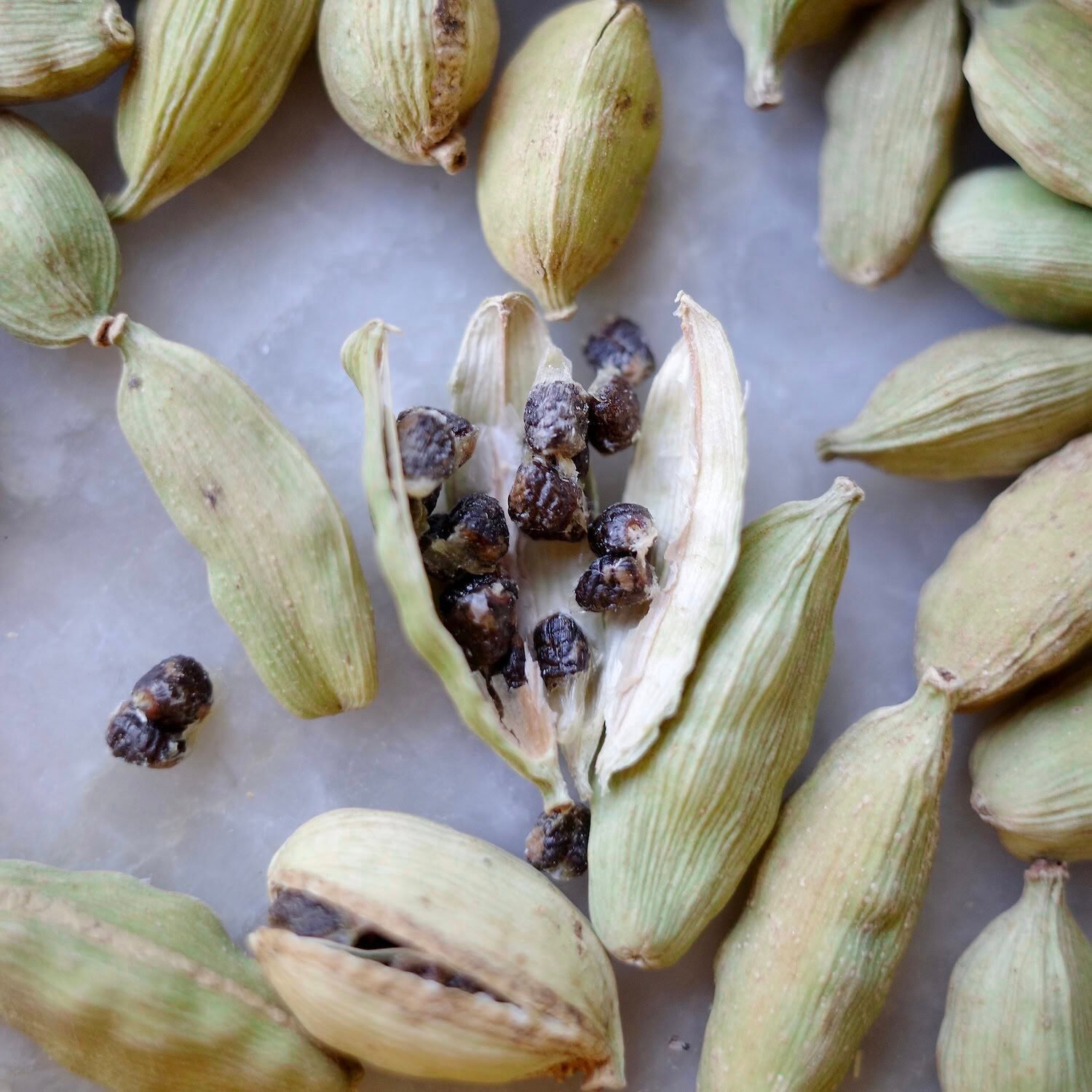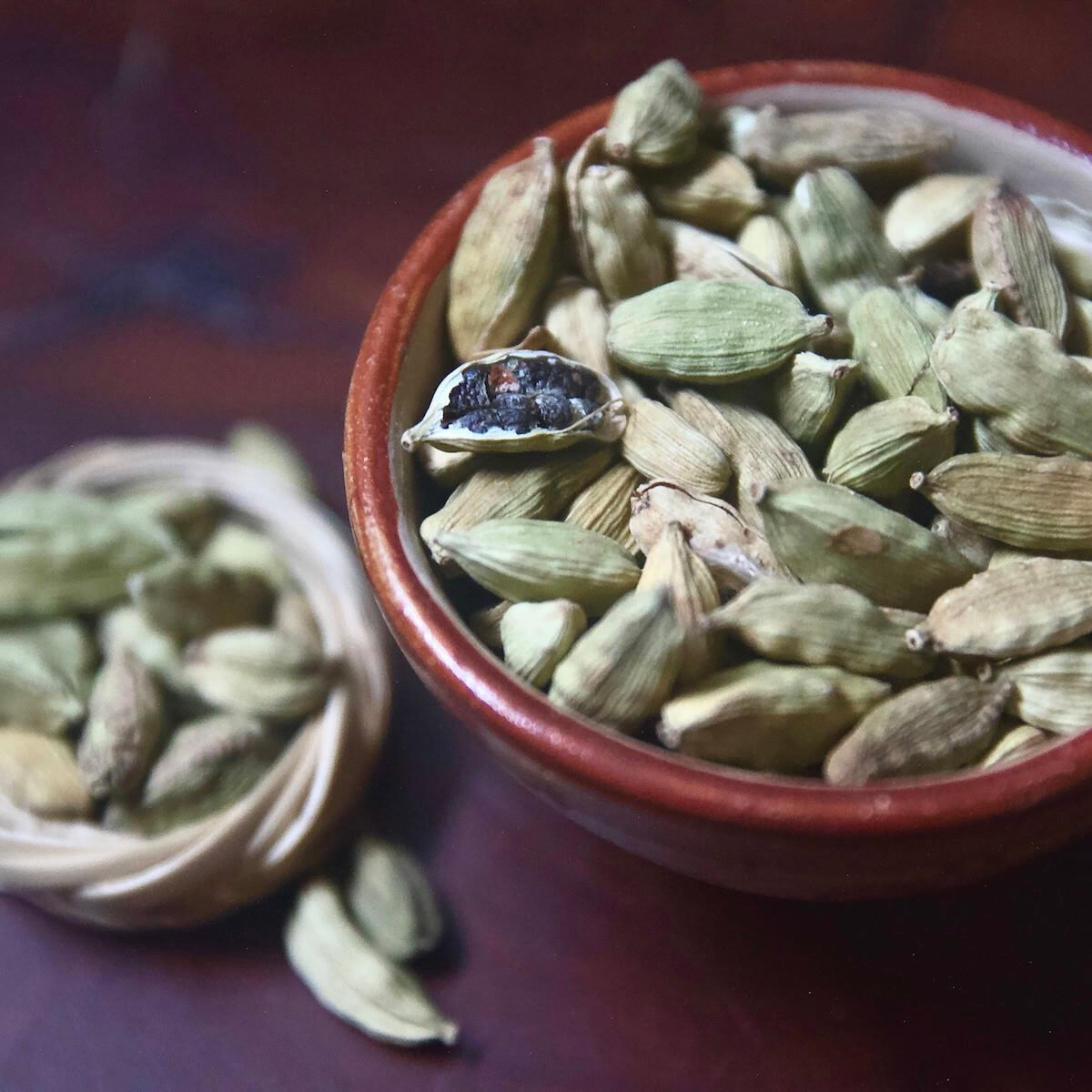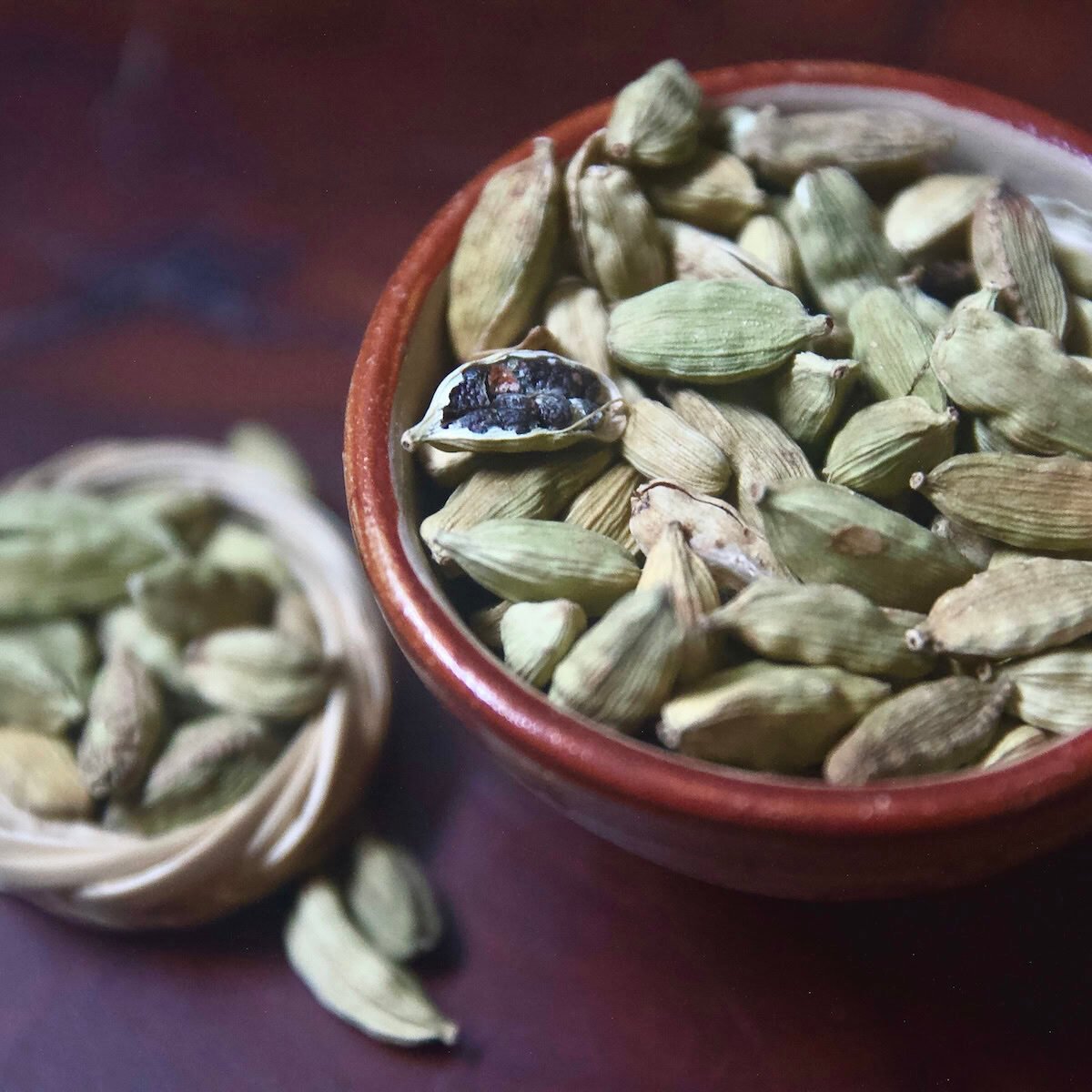Cardamom
True cardamom, or green cardamom, is the spice produced from the pods and seeds of Elettaria cardamomum, a tropical perennial herb in the ginger family.

REGION OF ORIGIN
Cardamom is from the lush, tropical rainforests of the Western Ghats mountain range in Southwestern India. It thrives with ample rainfall under the canopy of tall trees.
PART & COLOR
The pods are small, spindle-shaped capsules. When fresh, they are bright green and slightly sticky due to the oils permeating the skin from within. As they dry, they fade to a pale yellowish green. Inside each pod, there are ~15 small, sticky, black seeds, the source of the essential oils.
HARVEST
The cardamom plant is a perennial that requires patience and meticulous care to yield its precious spice. The plant begins producing cardamom pods about 3 years after planting and reaches peak production around 6-7 years. The harvest season generally occurs between August and March, peaking from October to December. Skilled harvesters carefully hand-pick the pods that have reached optimal ripeness—right before they split open. They are then dried and graded for their size, color, and quality.

FLAVOR & AROMA PROFILE
CULINARY USES
To its home cuisine of India, cardamom is a treasure. Whole pods are often simmered in rice dishes like biryani and pulao and ground cardamom shines in traditional beverages like chai and lassi. It is also needed to complete the flavor profiles of a plethora of Indian spice blends. But as this exquisite spice spread around the world, it became elemental to many more cultures. In Middle Eastern cuisine, it is used in both sweet and savory dishes, from lamb stews and fragrant rice pilafs to rich desserts like baklava and Turkish delight. It's also one of the most popular flavorings for Turkish and Arabic coffee. In Scandinavia, it is a favorite addition to baked goods like sweet breads and pastries, where its warm spice complements the dough and fruits.
With so much potential, cardamom is a uniquely intriguing spice. It's best not to feel limited by its traditional uses since it affords so much opportunity for creativity.



